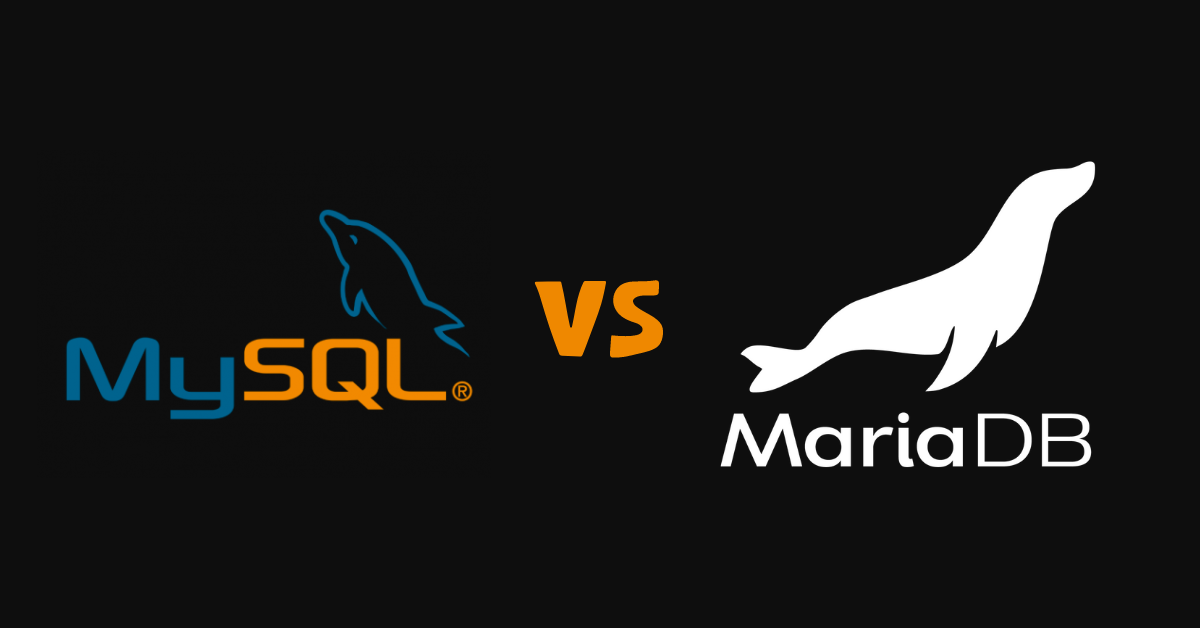MySQL vs. MariaDB: Same Roots, Different Roads – Final Showdown

In the ever-evolving world of database management systems, MySQL and MariaDB have consistently remained at the forefront of discussions. Both systems have their roots in the same lineage, yet they’ve diverged over the years, offering users distinct advantages and drawbacks. In this blog post, we’ll take a deep dive into the histories, advantages, disadvantages, and scenarios for using or avoiding MySQL and MariaDB.
History of MySQL:
- MySQL, which stands for “My Structured Query Language,” was developed in the mid-1990s by a Swedish company called MySQL AB.
- It quickly gained popularity due to its open-source nature and user-friendly interface.
- In 2008, MySQL AB was acquired by Sun Microsystems, which was later acquired by Oracle Corporation in 2010.
History of MariaDB:
- MariaDB, named after one of its co-founders Michael Widenius’ daughters, was born out of concerns about the future of MySQL under Oracle’s control.
- In 2009, Michael Widenius, one of the original creators of MySQL, forked MySQL’s source code to create MariaDB.
- MariaDB aimed to remain fully open-source and community-driven, offering an alternative to those wary of Oracle’s influence.
If the history of MariaDB intrigues you, I recommend exploring this related post.
Advantages of MariaDB:
- Stability: MySQL has a long history of being a reliable and stable database system, with widespread usage across industries.
- Ecosystem: Due to its longevity, MySQL has a vast and mature ecosystem of tools, plugins, and libraries that support various applications.
- Official Support: Oracle provides official support and regular updates for MySQL, ensuring security patches and feature enhancements.
Advantages of MySQL:
- Open Source Commitment: MariaDB’s strong commitment to open-source values has attracted developers concerned about the direction of MySQL under commercial ownership.
- Performance: MariaDB has made significant performance improvements, including storage engines like Aria and TokuDB, enhancing query execution speeds.
- Compatibility: MariaDB is designed to be a drop-in replacement for MySQL, making migration relatively straightforward for most applications.
Disadvantages of MySQL:
- Licensing and Ownership: Since Oracle’s acquisition of MySQL, concerns have arisen about Oracle’s control over the system and potential licensing changes.
- Feature Lag: MySQL’s development pace might be slower compared to other database systems, leading to a delay in the adoption of certain features.
- Community Tensions: Oracle’s handling of MySQL has led to tensions with parts of the open-source community, which has pushed some developers toward alternatives like MariaDB.
Disadvantages of MariaDB:
- Limited Third-party Tools: Although MariaDB strives for compatibility, there might be instances where third-party tools and libraries are more optimized for MySQL, causing potential compatibility issues.
- Smaller Ecosystem: MariaDB’s ecosystem, while growing, is still not as extensive as MySQL’s, which might impact the availability of certain features or support.
- Perceived Instability: Some users still view MariaDB as a relatively newer option and might be hesitant to switch from the more established MySQL.
When to Use MySQL:
- Choose MySQL when you need a stable, mature, and well-supported database system for mission-critical applications.
- If your application relies on a specific feature set offered by MySQL or its mature ecosystem, MySQL might be the preferable choice.
When to Use MariaDB:
- Opt for MariaDB if you value open-source principles and are looking for a MySQL-compatible system with improved performance.
- When you’re starting a new project and want a balance between stability and modern features, MariaDB could be a suitable option.
When to Avoid MariaDB:
- If you have reservations about Oracle’s ownership and want to avoid potential licensing changes or if you require the very latest features that MySQL might lack due to slower development.
When to Avoid MariaDB:
- If your application heavily depends on specific MySQL features that haven’t been fully replicated in MariaDB, or if you need an extensive ecosystem of third-party tools.
Conclusion:
Choosing between MySQL and MariaDB involves evaluating your project’s specific requirements, and considering factors such as performance, compatibility, licensing concerns, and ecosystem support. Both systems have their strengths and weaknesses, and ultimately, the decision hinges on your project’s unique needs and priorities. As the database landscape continues to evolve, MySQL and MariaDB remain formidable contenders, offering users a range of options for managing their data effectively.
If you haven’t taken a look at the post detailing the history of MariaDB, I encourage you to give it a read.






Leave a Reply